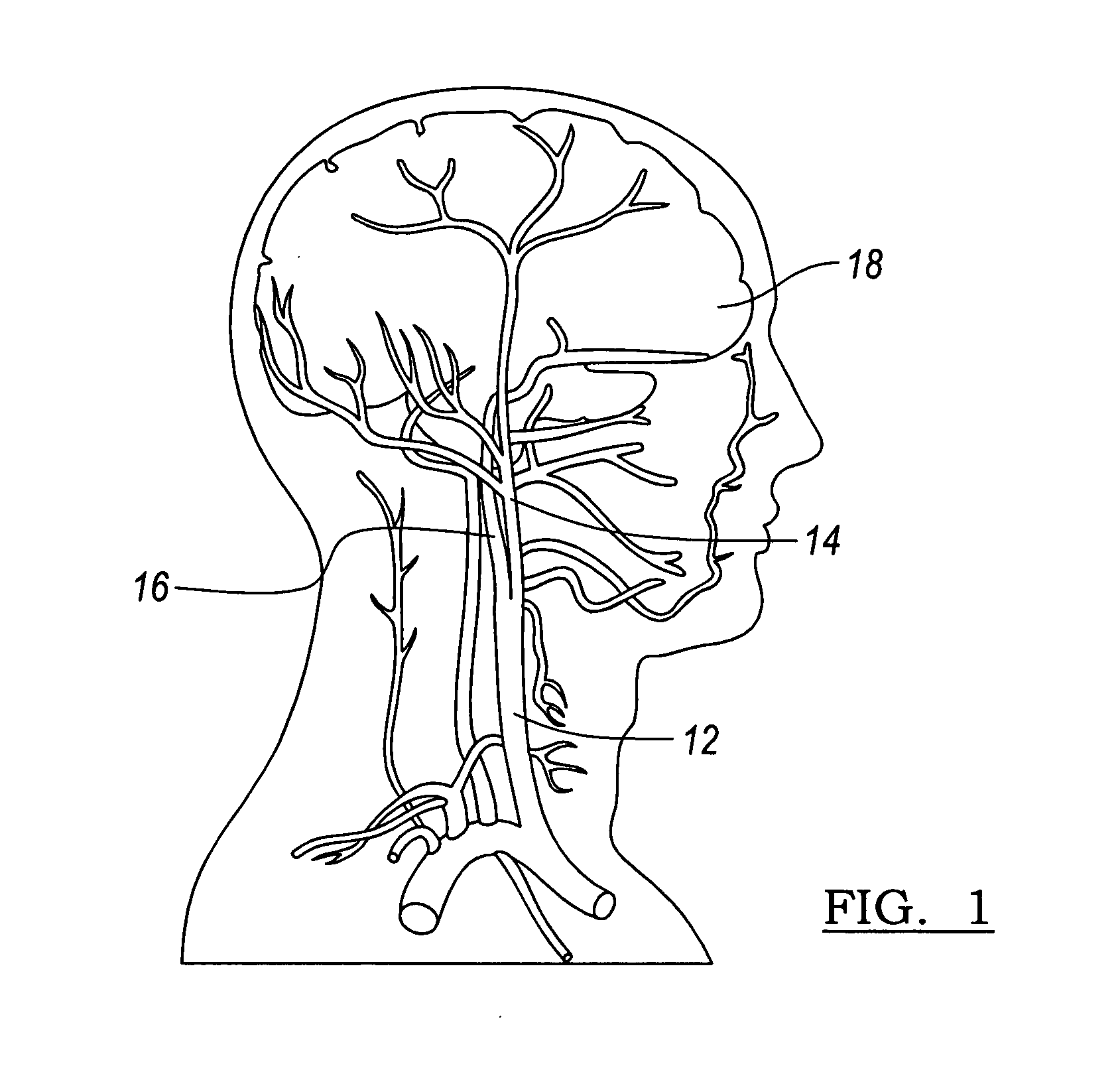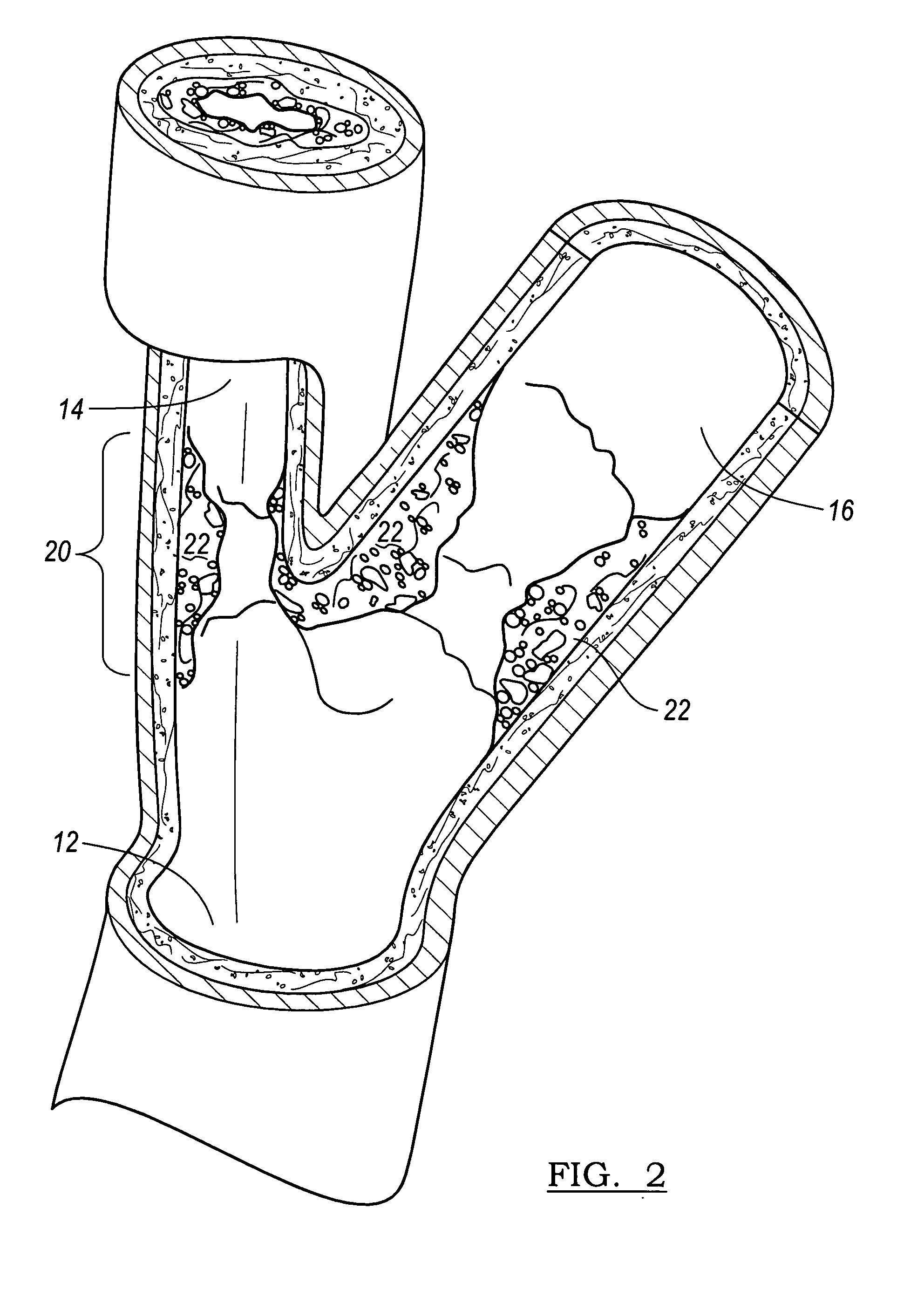Vascular stent for embolic protection
a vascular stent and embolic technology, applied in the field of vascular stents, can solve the problems of affecting the patient's life, and affecting the patient's health, and causing damage to the patien
- Summary
- Abstract
- Description
- Claims
- Application Information
AI Technical Summary
Benefits of technology
Problems solved by technology
Method used
Image
Examples
Embodiment Construction
[0027] Referring now to FIG. 1, the path of the carotid arteries through the head of a patient is illustrated. The common carotid artery 12 travels from the aortic arch to the neck of the patient. The common carotid artery 12 splits into the external carotid artery 14 and the internal carotid artery 16. The external carotid artery 14 travels back along the neck line and provides blood to the back of the head and brain 18. The internal carotid artery 16 travels underneath the chin and up inside the head to provide blood to the eyes and the front of the brain 18. A branch is formed where the common carotid artery 12 splits into the external carotid artery 14 and internal carotid artery 16. Often plaque can collect at the branch causing stenosis inside the artery. This is particularly a problem with the carotid arteries that supply blood to the brain. If plaque breaks free forming emboli, the emboli may travel along the artery into the brain 18 blocking a small vessel in the brain 18 a...
PUM
 Login to View More
Login to View More Abstract
Description
Claims
Application Information
 Login to View More
Login to View More - R&D
- Intellectual Property
- Life Sciences
- Materials
- Tech Scout
- Unparalleled Data Quality
- Higher Quality Content
- 60% Fewer Hallucinations
Browse by: Latest US Patents, China's latest patents, Technical Efficacy Thesaurus, Application Domain, Technology Topic, Popular Technical Reports.
© 2025 PatSnap. All rights reserved.Legal|Privacy policy|Modern Slavery Act Transparency Statement|Sitemap|About US| Contact US: help@patsnap.com



